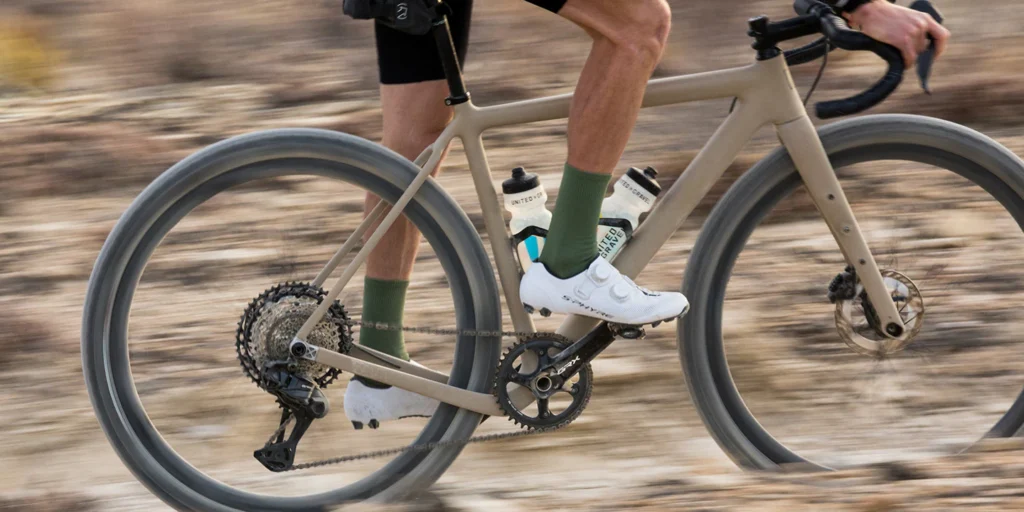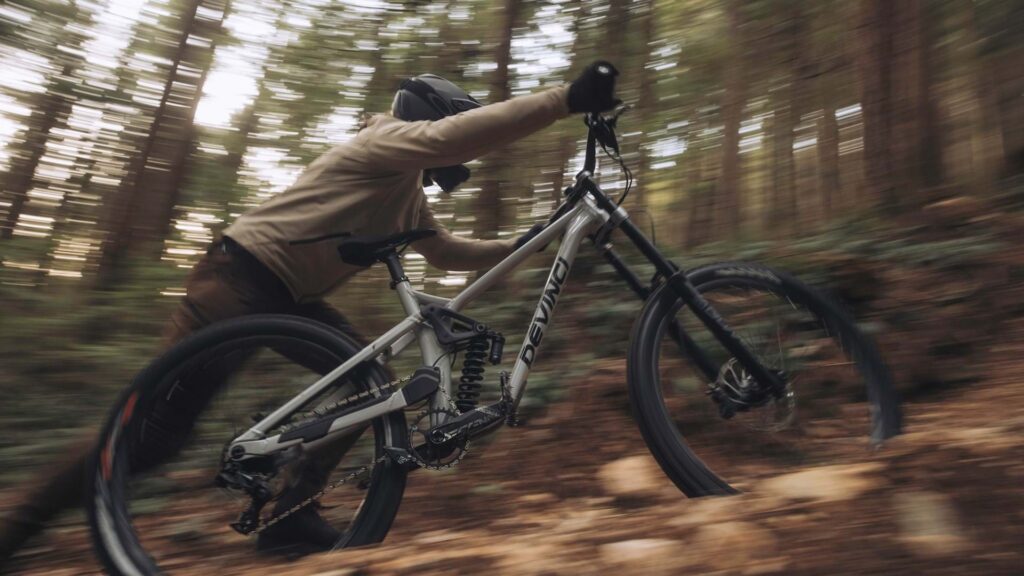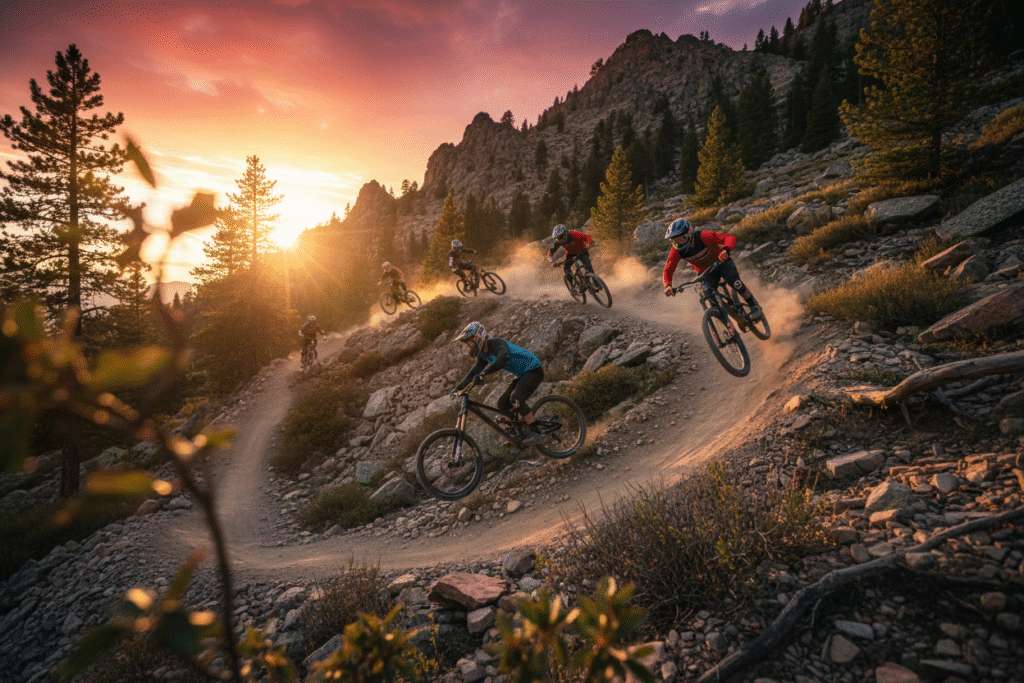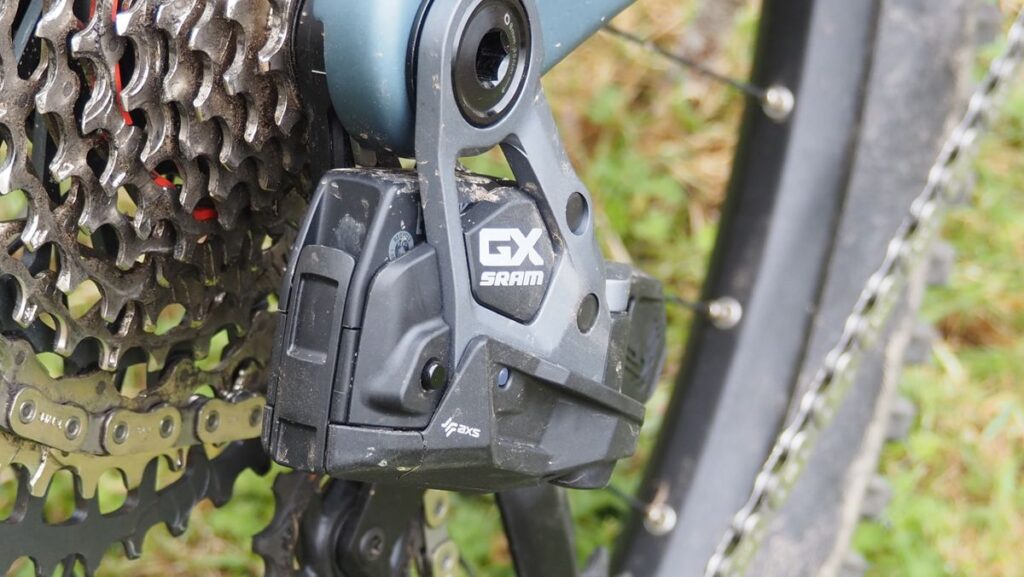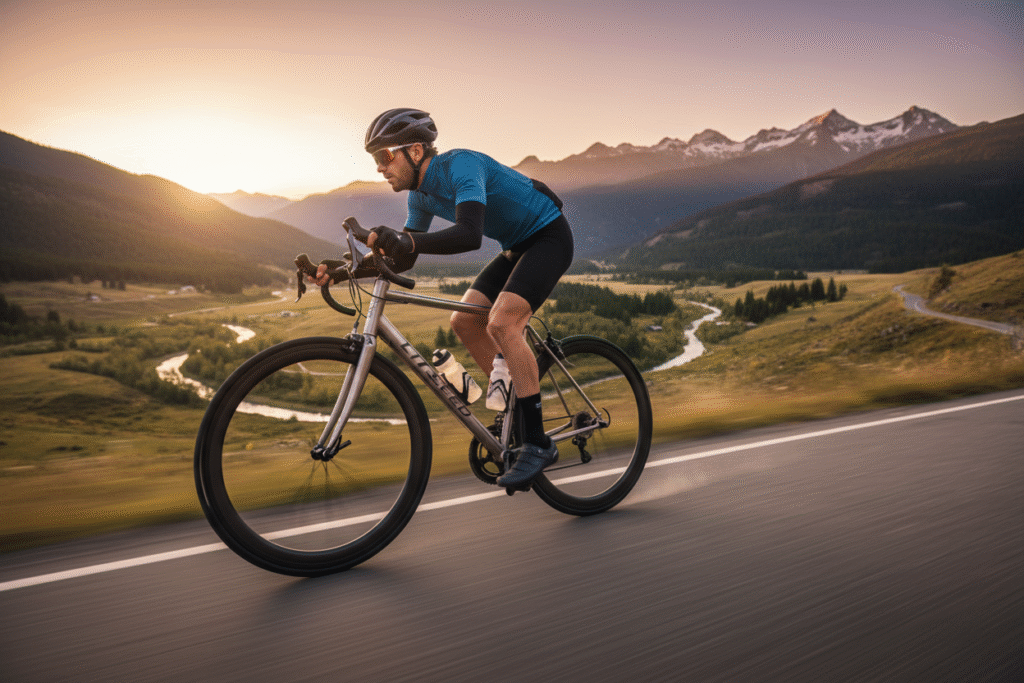Few names carry as much weight in the cycling world as Shimano. For more than a century, the Japanese component giant has been synonymous with reliability, innovation, and mechanical mastery. Whether you ride road, mountain, gravel, or e-bike, Shimano has shaped how your bike shifts, stops, and performs — often without you even realizing it.
In 2026, Shimano remains the benchmark of refinement. While SRAM and newer rivals push bold innovation, Shimano continues to perfect the art of quiet, precise, and durable engineering. Their latest 12-speed and Di2 systems blend tradition with next-generation tech, delivering the seamless experience that defines Shimano’s identity.
Brand Overview
Founded: 1921
Headquarters: Sakai, Osaka, Japan
Founder: Shozaburo Shimano
Core Products: Drivetrains, brakes, wheels, pedals, e-bike systems, fishing equipment
Shimano is not just the world’s largest cycling component manufacturer — it’s the foundation of the modern bicycle drivetrain. With over a century of continuous innovation, Shimano’s components have powered everyone from Tour de France winners to daily commuters.
From its first freewheel in 1921 to the fully integrated electronic Di2 shifting systems of today, Shimano’s commitment has been unwavering: to enhance the joy and efficiency of riding.
The Shimano Philosophy
Shimano’s design ethos is grounded in kaizen — the Japanese principle of continuous improvement. Unlike brands that chase revolution for its own sake, Shimano refines relentlessly, ensuring each generation of components builds subtly and beautifully on the last.
Core Principles
- Reliability First: Everything must work — every time, in any weather.
- Human Engineering: Products must feel intuitive and natural, not mechanical or forced.
- Total Integration: Shifters, derailleurs, brakes, and cassettes are designed to work as one.
- Quiet Innovation: Introduce technologies only when fully proven in the field.
The result? Shimano doesn’t just innovate — it matures technologies into long-term standards that define the industry.
Timeline of Key Innovations
| Year | Milestone | Impact |
|---|---|---|
| 1921 | First freewheel | Birth of Shimano Iron Works |
| 1973 | Dura-Ace introduced | Shimano enters professional racing |
| 1982 | Deore XT | The first MTB-specific group |
| 2009 | Di2 (Digital Integrated Intelligence) | Electronic shifting revolution |
| 2015 | Synchro Shift | Automatic front/rear coordination |
| 2021 | 12-speed Di2 for Dura-Ace & Ultegra | Wireless integration milestone |
| 2024 | LinkGlide for e-bikes | Durable shifting platform |
| 2026 | Di2 Wireless Integration V3 | Unified app + battery ecosystem |
Technology and Engineering
1. Di2 Wireless Shifting
Shimano’s Di2 system (Digital Integrated Intelligence) is the gold standard for electronic drivetrains.
The 2026 iteration features:
- Semi-wireless setup: wireless shifters, wired derailleurs for shared battery.
- Seamless reliability: no wireless lag, minimal interference.
- Synchro & Semi-Synchro modes: coordinates front and rear shifts automatically.
- App tuning via E-Tube Project V5: adjust shift speed, button functions, and update firmware.
Unlike SRAM’s fully wireless AXS, Shimano retains a centralized battery, ensuring consistent power and longer run time — up to 1,200 miles per charge.
2. Hyperglide+
Shimano’s Hyperglide+ is a quiet revolution in cassette design.
It allows smooth shifting both up and down the cassette under load — something no other brand has fully matched.
- Synchronized ramp profiles guide the chain seamlessly.
- Reduces chain tension spikes during climbs or sprints.
- Works across both MTB (XTR, XT, SLX) and GRX 12-speed systems.
The result: buttery transitions that feel almost subconscious.
3. LinkGlide
Introduced in 2024 and refined for 2026, LinkGlide is Shimano’s drivetrain platform for e-bikes and high-mileage riders.
It prioritizes longevity and smoothness over absolute weight savings.
- Chains and cassettes last up to 300% longer than standard Hyperglide+ equivalents.
- Optimized tooth profiles for smoother torque transitions.
- Available on mid-tier and commuter drivetrains (Deore, CUES).
This makes Shimano’s e-bike drivetrains the most durable and forgiving on the market.
4. Servo Wave Brake Tech
Shimano’s disc brakes remain the benchmark for modulation and reliability.
Servo Wave lever design increases pad travel early for control, then adds power at the end of the stroke — providing a predictable, confident feel.
- Road: Dura-Ace/Ultegra/105 Di2 hydraulic systems feature refined modulation and quieter calipers.
- MTB: XT and XTR remain the gold standard in balance between power and control.
Where SRAM brakes are praised for progressiveness, Shimano’s strength lies in immediate, linear bite — giving riders total confidence.
5. HOLLOWTECH II Cranks
A hallmark of Shimano engineering, HOLLOWTECH II combines strength, stiffness, and low weight.
Forged and hollowed aluminum arms deliver exceptional power transfer with long-term durability.
Fun fact: Many carbon cranks from other brands flex more than Shimano’s forged aluminum.
6. Wheels and Integration
Shimano’s C50, C36, and C60 carbon wheelsets are built with balanced aerodynamics, rather than chasing headline drag numbers.
They’re designed to complement real-world handling — predictable, comfortable, and incredibly durable.
Integration extends to pedals (SPD, SPD-SL), cleats, and even footwear — a complete rider-system approach unique to Shimano.
Product Lineup (2026)
Road & Gravel
| Tier | Group | Speed | Key Features | Rider Type |
|---|---|---|---|---|
| Dura-Ace Di2 | R9250 | 12 | Wireless shifters, lightest yet, pro-level | Racers |
| Ultegra Di2 | R8150 | 12 | Same performance, slightly heavier | Enthusiasts |
| 105 Di2 | R7150 | 12 | Affordable electronic, great reliability | Club riders |
| GRX Di2 | RX825 | 12 | Gravel-specific gearing, clutch mech | Adventure riders |
| GRX Mechanical | RX620 | 12 | Rugged simplicity | Budget gravel |
Key note: Shimano now offers Di2 across all three major road tiers, bringing electronic precision to more riders than ever.
MTB & E-MTB
| Tier | Group | Platform | Highlights |
|---|---|---|---|
| XTR | Hyperglide+ | Race-level 12-speed, carbon cranks | Pure XC performance |
| XT | Hyperglide+ | Trail legend, best all-rounder | Value/performance |
| SLX | Hyperglide+ | Affordable 12-speed | High performance, low cost |
| Deore / CUES / LinkGlide | LinkGlide | 11-speed durability | E-bike and commuter systems |
Shimano’s MTB drivetrains are known for silence and precision — less flashy than SRAM, but extremely refined and dependable.
E-Bike Systems (Steps 2026)
Shimano’s EP8 and EP801 motors now feature:
- Improved heat management for sustained power.
- Torque up to 85 Nm.
- Native LinkGlide compatibility for smooth torque transfer.
- Integrated Di2 shifting control for semi-automatic gear selection.
The E-Tube app now links power modes, shift logic, and battery tracking — bringing Shimano’s full systems integration into the e-bike age.
Ride Feel and Performance
Shimano’s hallmark is refinement.
Every click, shift, and modulation feels deliberate and perfectly damped — less mechanical “snap” than SRAM, more “liquid precision.”
Shifting Feel
- Mechanical: Light, short lever throw, quiet clicks.
- Di2: Seamless, instant shifts — feels almost telepathic.
- GRX: Slightly firmer, tactile for gravel.
Braking Feel
- Immediate bite, strong modulation, minimal fade.
- Perfect for descending or wet conditions.
Ergonomics
Shimano’s hoods fit naturally — refined lever shapes, smaller hands fit better than ever.
Maintenance and Reliability
- Mechanical durability: Legendary. Cables last thousands of miles when installed correctly.
- Di2: Set-and-forget. Charge every 1,000–1,500 miles.
- Hydraulic brakes: Rarely need bleeding; mineral oil resists moisture absorption.
- Parts availability: Unmatched global service network.
Shimano’s only weakness? Slightly slower to innovate — but that’s by design. The brand moves when it’s ready.
Strengths
- Legendary reliability — proven over decades.
- Smoothest shifting (especially Di2 and Hyperglide+).
- Broad range — from pro race to casual commuter.
- Excellent braking — confident and predictable.
- Global parts availability and service network.
- Quiet operation — less mechanical noise than most drivetrains.
Weaknesses
- Slower innovation cycle than SRAM.
- Conservative gearing options until recently.
- Proprietary electronic ecosystem (Di2-only compatibility).
- Less customization compared to SRAM’s AXS app flexibility.
Shimano vs SRAM (2026)
| Feature | Shimano | SRAM |
|---|---|---|
| Innovation | Gradual, proven | Bold, fast |
| Wireless | Semi-wireless | Fully wireless |
| Battery System | One shared battery | Individual derailleur batteries |
| Brakes | Sharper bite | Smoother modulation |
| Maintenance | Lower long-term | Easier setup |
| Noise Level | Quieter drivetrain | Louder, more tactile |
| Pricing | Slightly lower | Premium tier skewed |
Verdict:
Shimano wins for refinement and dependability. SRAM wins for integration and innovation. Riders seeking a polished, timeless experience often choose Shimano; those chasing cutting-edge minimalism gravitate to SRAM.
Ideal Riders
- Endurance & Road: Riders valuing smoothness, silence, and reliability.
- Gravel / Adventure: Those who prefer tactile feel and long-term dependability.
- E-Bikes: Commuters who need torque-friendly systems with minimal maintenance.
- Performance Racers: Riders who demand precision and proven performance under pressure.
Verdict
In 2026, Shimano remains the heartbeat of modern cycling — not because it’s the flashiest, but because it’s the most complete. From precision road drivetrains to bombproof e-bike systems, every product reflects a century of craftsmanship.
Where SRAM wins on innovation, Shimano triumphs through trust. Its products feel invisible beneath you — doing their job perfectly, quietly, every time.
Shimano (2026): Precision Refined. Performance Perfected.
Final Take
Shimano’s magic lies in restraint. It doesn’t reinvent the wheel — it makes the wheel spin smoother, quieter, and longer than anyone else.
If you want technology that just works, with minimal fuss and years of reliability, Shimano remains the safest, smartest choice in cycling.
For racers, commuters, and weekend riders alike, Shimano’s mastery of feel, function, and longevity continues to define what great components should be.
FAQs
Is Shimano better than SRAM?
It depends. Shimano is smoother and quieter; SRAM is bolder and more integrated.
How long does a Di2 battery last?
Up to 1,200 miles per charge with normal use.
Is Shimano good for e-bikes?
Yes — their LinkGlide and EP801 systems are among the most durable available.
Does Shimano have wireless shifting?
Yes, via Di2 12-speed systems (semi-wireless setup).
Can I mix Shimano and SRAM parts?
Generally no — their systems use different spacing and pull ratios.
Related Content:
Why Trust This Review?
BestBikeBrands is built by lifelong cyclists with decades of real-world experience — in the shop, on the trail, and behind the wrench. Our goal is simple: to help riders choose the best bikes and gear with confidence, backed by expert insights and hands-on testing. Learn more about us →
